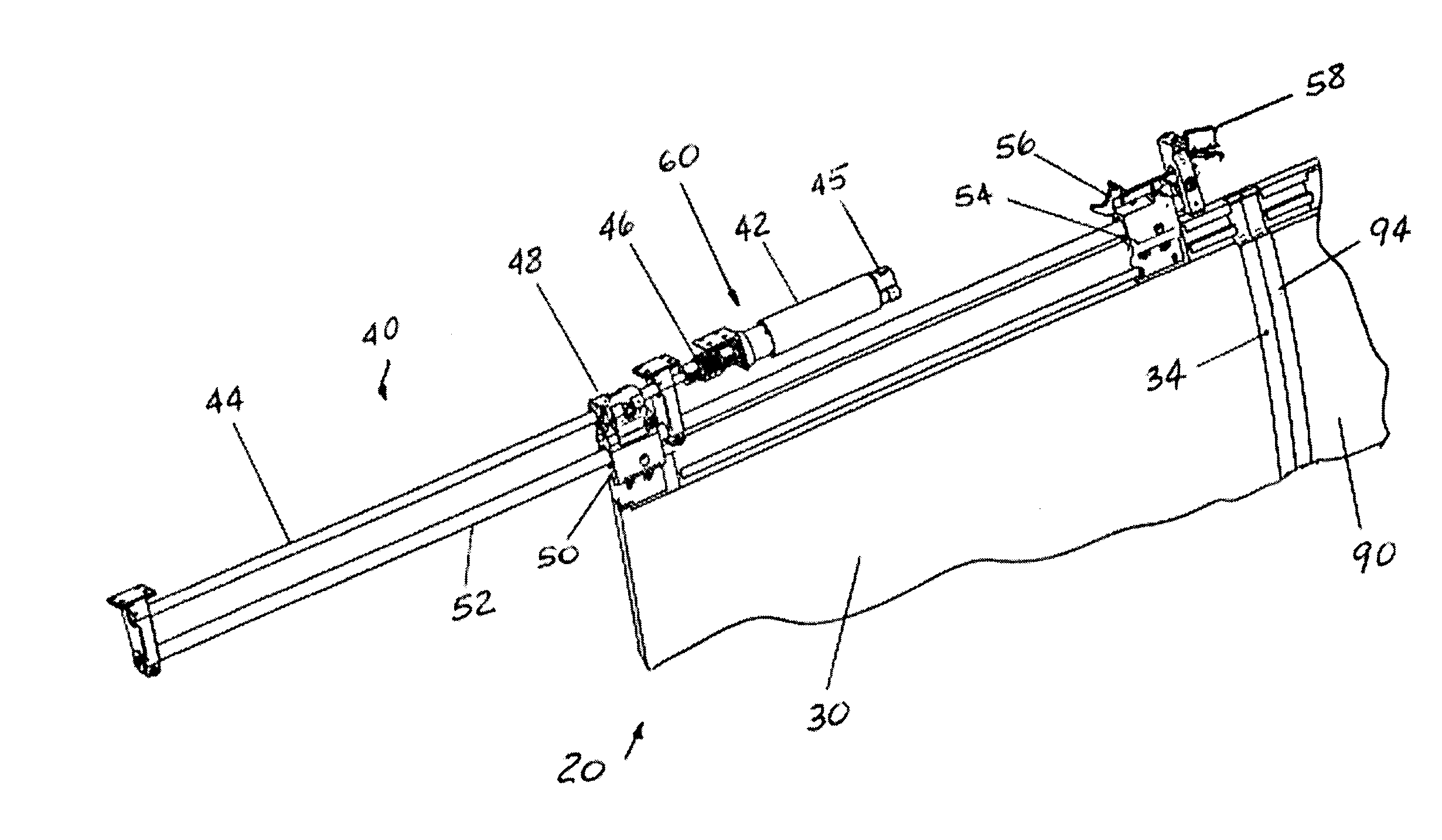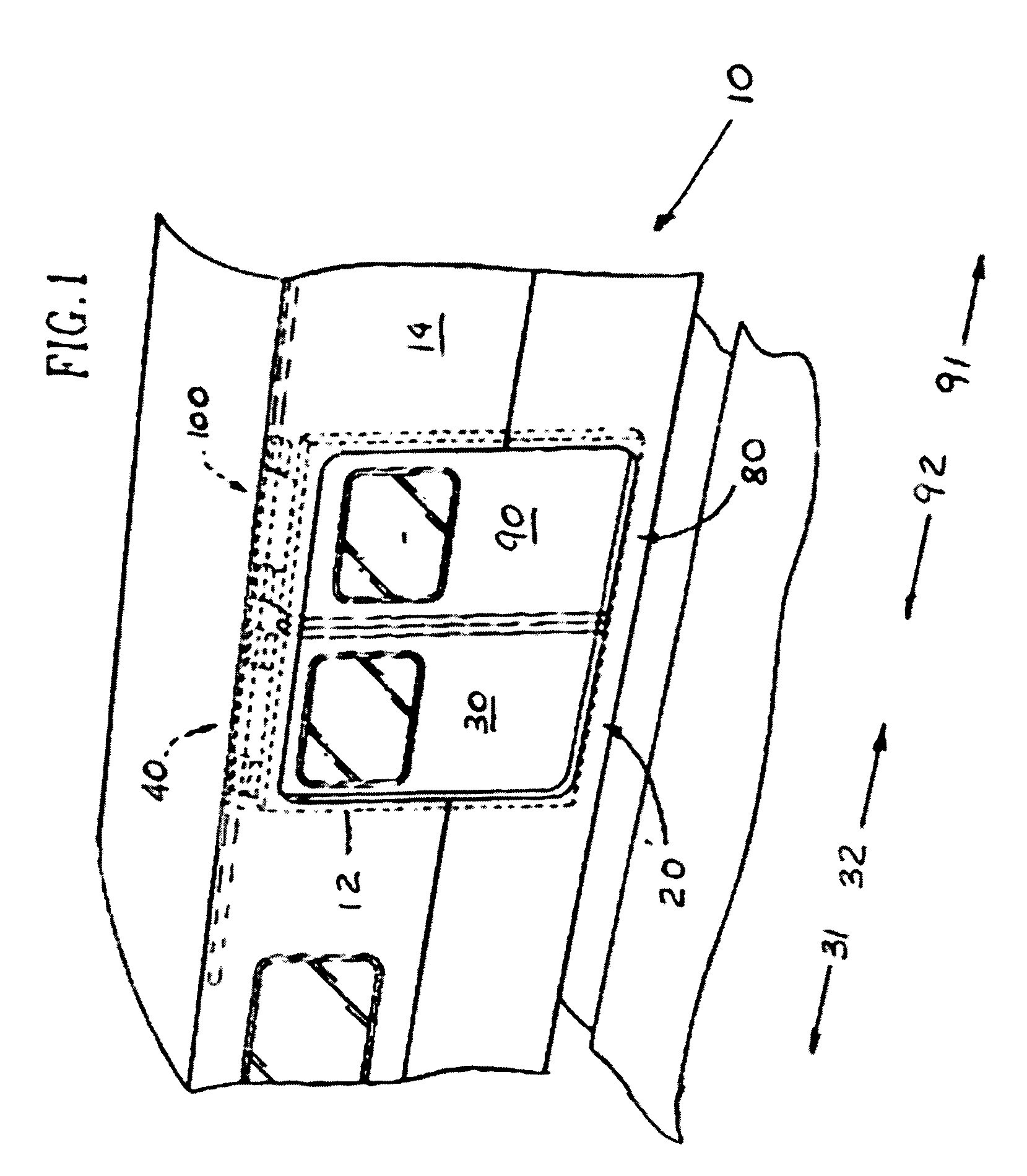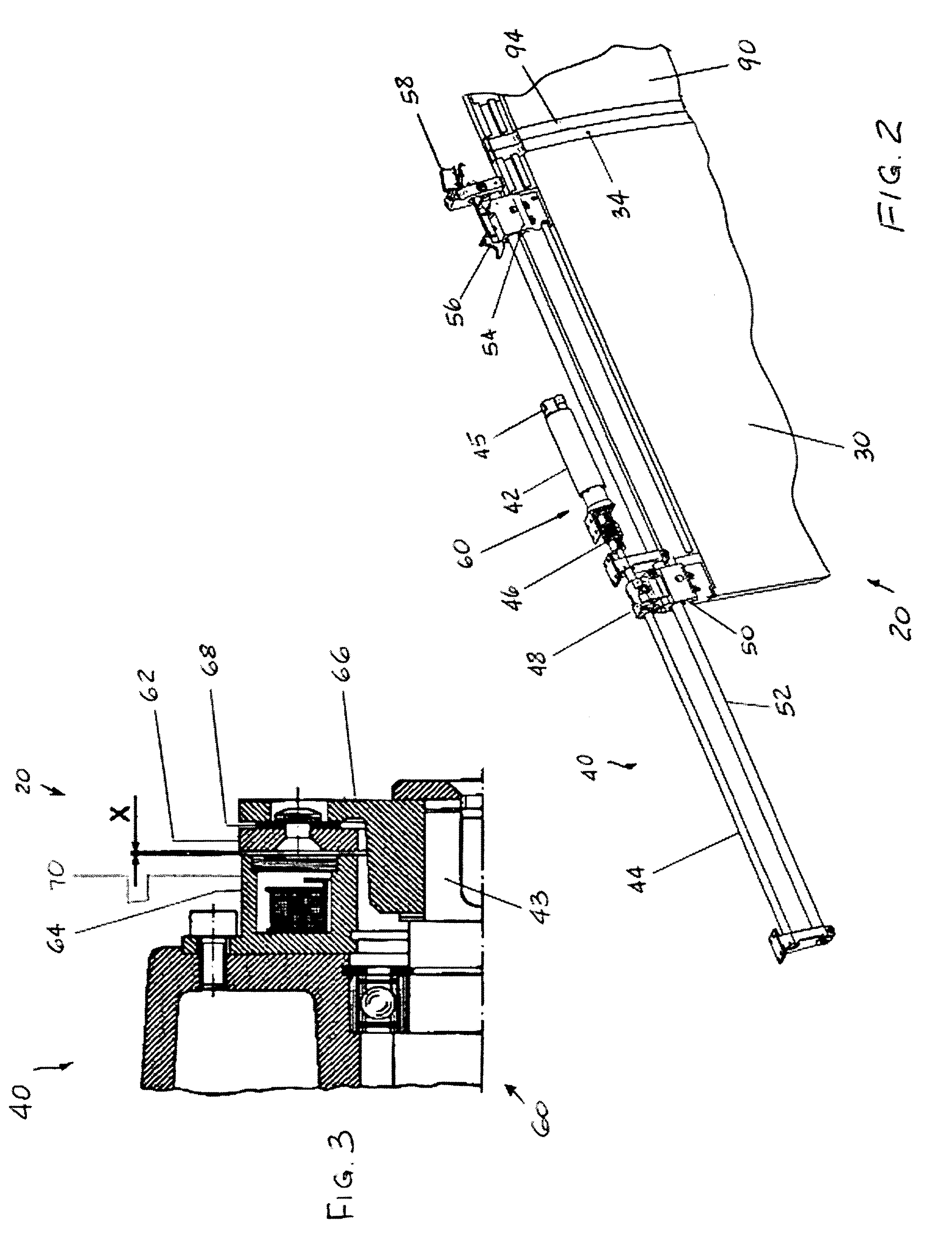Door system for transit vehicle utilizing compression lock arrangement
a technology for transit vehicles and doors, applied in the field of transit vehicle door systems, can solve the problems of unrestricted pushback, undesirable incremental longitudinal movement of doors, and compromising the sealing capabilities of the door system, so as to improve the reliability of the lock mechanism operation, reduce the number of locking operations, and protect against environmental factors
- Summary
- Abstract
- Description
- Claims
- Application Information
AI Technical Summary
Benefits of technology
Problems solved by technology
Method used
Image
Examples
Embodiment Construction
, particularly, when the detailed description is taken in conjunction with the attached drawing figures and with the appended claims.
BRIEF DESCRIPTION OF THE DRAWINGS
[0032]FIG. 1 is a partial perspective view of a typical transit vehicle door system.
[0033]FIG. 2 is a partial perspective view of the door system, particularly showing a powered door drive means and door.
[0034]FIG. 3 is a partial cross-sectional plan view of the electromagnetic brake.
[0035]FIG. 4 is a schematic illustration which shows an embodiment of the invention connected to the door system control unit.
[0036]FIG. 5 is a partial cross-sectional elevation view of the prior art design.
DESCRIPTION OF THE PRESENTLY PREFERRED AND VARIOUS ALTERNATIVE EMBODIMENTS OF THE INVENTION
[0037]Before describing the invention in detail, the reader is advised that, for the sake of clarity and understanding, identical components having identical functions have been marked where possible with the same reference numerals in each of the ...
PUM
 Login to View More
Login to View More Abstract
Description
Claims
Application Information
 Login to View More
Login to View More - R&D
- Intellectual Property
- Life Sciences
- Materials
- Tech Scout
- Unparalleled Data Quality
- Higher Quality Content
- 60% Fewer Hallucinations
Browse by: Latest US Patents, China's latest patents, Technical Efficacy Thesaurus, Application Domain, Technology Topic, Popular Technical Reports.
© 2025 PatSnap. All rights reserved.Legal|Privacy policy|Modern Slavery Act Transparency Statement|Sitemap|About US| Contact US: help@patsnap.com



